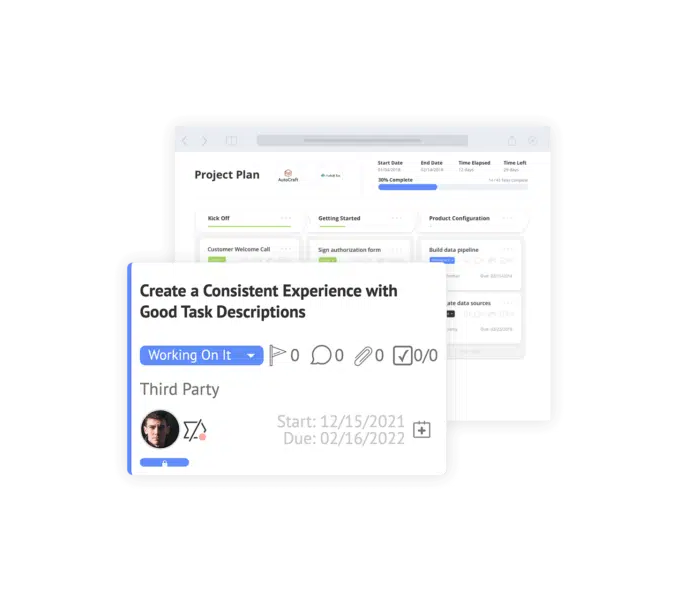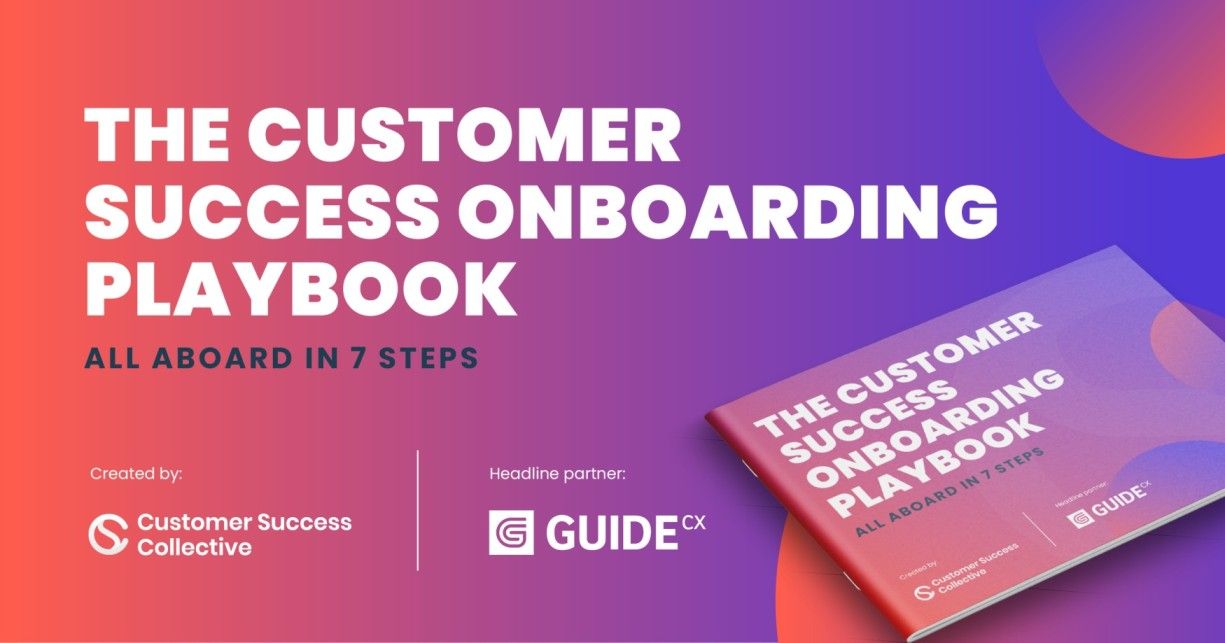In today’s fast-paced business world, time is a valuable commodity. Streamlining workflows and eliminating repetitive tasks can free up resources to focus on growing your business. That’s where customer onboarding software comes in. By digitizing the onboarding process, customer onboarding software can help your teams and company do more with less.
In this article, we’ll explore nine ways customer onboarding software can help you save time and money and how GUIDEcx, the worldwide leader in customer onboarding, can help you achieve these benefits.
1. Provides templates during the onboarding process
A template is the digital version of all the steps and tasks in your onboarding or implementation process for any of your products and services.
Templates are crucial to customer onboarding software—especially for teams with repeatable processes. They allow your team to follow the process every time without needing to remember the steps. This helps teams save time in the long run while providing a consistent experience for every customer. Digitizing your onboarding process helps both your teams and your customer experience.
At GUIDEcx, we often help our clients see templates as “living, breathing documents,” you don’t just set them and forget them. Because in addition to capturing the process, templates allow you to iterate and systematically improve onboarding. Each time you run through your workflow using a template, look for what’s working well and find the gaps and timewasters.
2. Reduce your customer’s confusion
Engaging with customers is great, but explaining tasks over and over is a major waste of time. Your onboarding software should include both task assignments and descriptions.
Task assignments eliminate confusion and clarify who’s responsible. Providing task descriptions helps customers understand what’s expected of them and how best to get it done. Be clear, concise, and specific with your description. But most importantly, be human. Although you’re using software to save time, your customers still want to feel like they’re engaging with real people.

The powerful combination of templates and task descriptions will save you a ton of time because you only have to do it once. All future projects will have any task descriptions you outline in your template. Your customers are less likely to be confused because they know exactly what’s expected.
3. Highlight trends and bottlenecks in the process
Custom reports are your new secret weapon. If you’re going to use onboarding software, it needs to provide actionable insights, spot trends, and identify common bottlenecks and tasks that stall projects. When you’re armed with the right information about your processes, you’re able to update your templates and processes to ensure customers aren’t getting stuck along the way.

4. Automate routine tasks
How much could you get done if you weren’t spending hours per day sending emails and reminders about tasks? When you’re managing multiple implementations simultaneously, you need an onboarding tool that can automate the most routine, repetitive tasks.
Automated task assignment email notifications and reminders sent to your customers can save you daily hours. Tools like GUIDEcx will allow users to update task statuses with one click straight from the email—no logins required.

5. Provide clarity around project progress, delays, risks
Guessing – or worse, hunting – through emails to determine each customer implementation status is a major waste of time. You’ll get more done with less effort by using onboarding software that shows you at a glance where customers are in the process.
Better still, the software you use should include status change reasons. Users should be prompted to note the reason why when a project status changes. This way, when you go to review your active projects, you’ll see exactly why things may have slowed down or stalled.
6. Create visibility for key external stakeholders
Managing people you don’t manage, like customers and third parties, is one of the hardest things about onboarding. It can be tough when you have to encourage people who don’t report to you to complete tasks.
To create accountability and encourage task completion, your customer onboarding software should allow key customer stakeholders to view the project dashboard. This way, the stakeholder(s) who purchased your product or service can see when their team might be causing delays. They’ll help encourage their team to keep the ball rolling, so you don’t have to!

7. Eliminate cross-functional silos
Use an onboarding tool that allows internal stakeholders to access the project plan and see all the information at a glance. When onboarding and implementations stall, your sales team and other internal stakeholders might come calling. They want to know the project status, the anticipated completion date, and any other details that can help them understand the delays. You’ll eliminate not only silos but hours of meetings, emails, and Slack messages every week.
8. Integrate with your CRM and CS software
The sales to onboarding to customer success handoffs should be seamless. Use customer onboarding software that integrates with your customer relationship management (CRM) and customer success (CS) software. When onboarding solutions automatically create a new onboarding project when projects are marked “Closed: Won” in your CRM tool, you’ll save time. This way, your onboarding teams never miss a beat, and no customers fall through the cracks.
When it comes to customer success, good onboarding drives long-term retention. You’ll save time for your CS team by ensuring that customers have an excellent experience during onboarding. GUIDEcx integrates with both Salesforce and HubSpot to fill the gap between the sales process and customer success.
Your tool should also integrate with leading CS tools like Gainsight to ensure that CS teams are well-informed about the health of every account right from the start.
Speaking of Gainsight…
Pete Ord, CEO & Founder at GUIDEcx, had a blast partnering with Nick Mehta, CEO at Gainsight, where they discussed how companies can prepare for economic headwinds by streamlining the customer onboarding processes. 👇
9. Provide professional resources
When you buy onboarding software, the support shouldn’t end there. You need a team of onboarding experts that can offer professional resources to help you better understand your processes and find hidden ways to optimize your workflow.
From training to masterclasses to live Q&As, you’ll save time and effort with access to onboarding experts who can answer questions, share tips, and offer best practices based on years of experience with companies across industries.

Like this article?
If we've captured your attention and you're hungry to learn more about how to finesse your customer onboarding process, then you'll love our playbook on just that.
Created in partnership with GUIDEcx, it'll completely transform the way you approach onboarding through a clearly defined step-by-step process with some eye-opening expert insights along the way!




